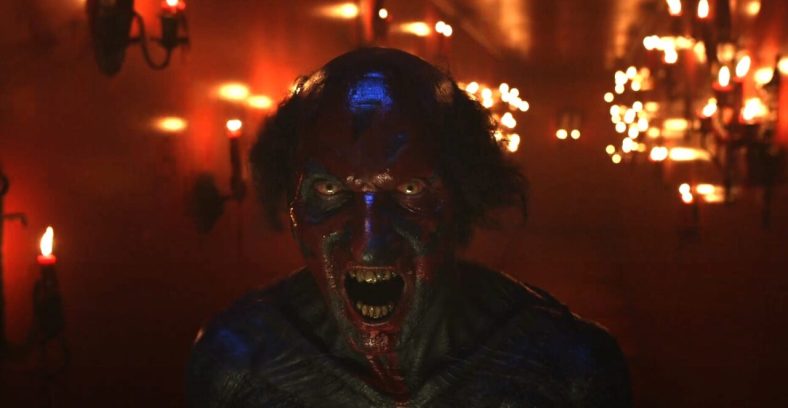An Insidious Truth: Hollywood Could Learn from Horror

Hollywood could learn a lesson (or several) from the horror genre. The movie theater has been on a quiet death march for decades, though the phenomenon has no doubt been more pronounced in the years after the pandemic. With theaters shuttered through the tentpole summer and forthcoming holidays (Tenet and Russell Crowe’s Unhinged notwithstanding), exhibitors and studios were desperate to quell pandemic panic and get audiences back in the theater. Horror, like Insidious: The Red Door, has helped.
A Quiet Place Part II was released in May 2021 and grossed nearly $300 million. Halloween Kills, delayed from the year prior, opened to a staggering $49 million opening weekend. The Conjuring: The Devil Made Me Do It managed a respectable $206 million despite releasing five years after the last entry. Horror buoyed a dying industry, augmenting theatrical interest with indelible concepts, franchise entries, and fresh scares. Horror’s buoy wasn’t just conceptual, however—it was also financial. As Hollywood responds to an ever-encroaching crisis, horror is the template. Yet, two years after theaters returned in earnest, studios have yet to learn the right lesson. Audiences haven’t become too small- movies have become too big.
Indiana Jones and the Dial of Destiny, despite its uncanny valley digital de-aging, doesn’t deserve to be the scapegoat. It’s fine (not great) but nowhere near the disaster something like The Flash is. Yet both movies, with respective $300 million and $220 million budgets (not accounting for marketing), were predisposed to failure even before release. There is simply no way for a movie that big— especially in today’s tenuous theatrical ecosystem—to make the kind of money it needs to be deemed a success. The prevailing wisdom, so it goes, points to these summer tentpoles, propping up the likes of Barbie ($100 million budget) and Oppenheimer ($100 million budget) as theatrical saviors. I’m looking forward to both, no doubt, though the perspective would be better shifted to the horror landscape.
Box offices are grim, sure, but you wouldn’t know that looking at the horror genre. M3GAN made $180 million against a $12 million budget. Scream VI, the year’s largest horror debut, is sitting at $168 million against $33 million. This past weekend, the Patrick Wilson helmed Insidious: The Red Door grossed an estimated $32 million domestically against a reported $16 million budget. That’s incredible, especially for an early Blumhouse lovechild absent for several years.
The lesson here isn’t more horror. Oversaturation will kill horror’s remunerative nature. Too much horror might well be no horror at all. The key takeaway is relatively. More than anything, horror’s repeated success is indicative of the diversity of audience interest. A few franchise entries (Scream VI, Insidious) have their place, bringing back audiences old and new for another round of familiar faces and fresh scares. High-concept outings like M3GAN and The Blackening can bring an audience in with premise alone. Terrifier 2 targeted extreme horror fans to staggering success. Exhibitors often talk of genre, reserving large auditoriums for superhero blockbusters, and smaller ones for A24 dramas, though where the broad system is delineated by genre, horror’s multiplicity of appeal for different audiences and different sensibilities has proven remarkably successful.
As noted, relativity is key. I’m not the first to suggest a return to the mid-budget system, and I certainly won’t be the last, though the aforementioned heterogeneity of horror is a lesson worth heeding. Absent the expanded, cinematic universe (other than The Conjuring, of course) and pricey VFX, horror is inceptively profitable. A little money and a big concept equal big bucks.
Insidious: The Red Door could have doubled or even tripled its budget. It was as sure a horror bet as anything if the previous four entries’ box office returns are any indication. Instead, like David Gordon Green’s 2018 Halloween reboot ($10 million budget), costs were kept reasonable to ensure as great a chance for success as possible. Neither film feels cheap. Neither look like low-budget, bottom-barrel, VOD horror. There’s integrity and craftsmanship. There’s horror and serious scares. And, well, it didn’t take $200 million to do it.
As audiences continue to reconcile the theaters of yesterday with the landscape of today, studios would wisely consider the lesson of the horror genre. Anxieties change, but fear is perennial. A hybrid system of smaller budgets and a better sense of the audience pulse will not just save the horror genre, but cinema in general. Because if theaters collapse, horror will remain, but it won’t be the same. There’s nothing like a packed auditorium, everyone holding their breath in tandem, anticipating the next jump or kill. Horror needs theaters as much as theaters need horror. The genre is holding up its end. Now it’s time for studios to do the same.
Categorized:Editorials

